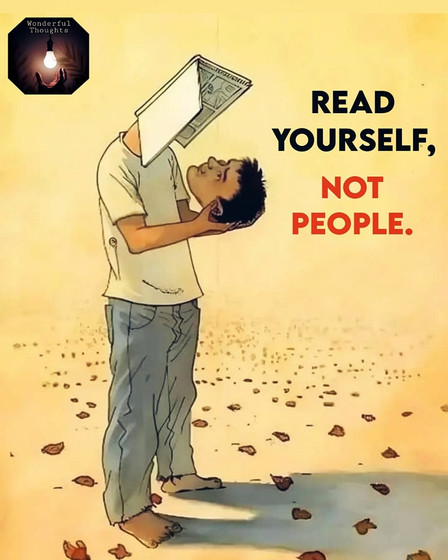HOME | DD
 Raeistic —
Detangling DPI
Raeistic —
Detangling DPI

Published: 2013-04-08 19:02:03 +0000 UTC; Views: 28565; Favourites: 1066; Downloads: 193
Redirect to original
Description
TUMBLR FRIENDLY VERSION HERELet's talk about DPI.
I've heard people ask, "If I make an image in Photoshop and I want to bring it into After Effects, what DPI should it be to be good quality?"
Or on Deviantart: "I made my canvas 2500x3000 pixels @300DPI."
No. That's not how it works xD
DISCLAIMER: This guide is targeted mainly at people who work digitally, for digital/web output, set their document size via pixels, and rarely print, but still set their DPI thinking it changes something about the quality of their digital pixels. Obviously if you work specifically for print, DPI is going to matter a lot more to you than pixels. In that case this guide is not really meant for you, but the information still applies nonetheless.
Advanced cropping, resizing, resampling in Photoshop from Adobe, in case you still don't understand and/or want to read about more advanced specifics regarding image resolution.
OTHER CLARIFICATIONS:
PPI = Pixels Per Inch
PPI is often used interchangeably with DPI. They are not, however, the same thing. PPI is device-dependent while DPI is image-dependent. (Though if you want to get technical about it, PPI is for screens (Screen Resolution), DPI is for printers (Print Resolution), and the image resolution is neither DPI nor PPI, it's the 'Image Resolution,' measured in pixels-per-inch. The DPI and Image Resolution are so closely related though that they may as well be the same thing, I refer to them as the same thing, and for the sake of this guide I am also referring to them as the same thing, since most people know it as DPI anyway). I know, crazy right?
PPI is for screens. A screen with a higher PPI will fit more pixels into every inch of its screen size, giving you higher quality visuals. The higher the PPI of a screen, the smaller the pixels get, and newer monitors tend to have higher PPI (retina displays, anyone?). It’s why, when you got that shiny new Windows computer, your icons/windows/everything all seemed to be smaller than the ones from your old one.They show you that same 256x256 image in their new, smaller pixels, resulting in a higher quality, less pixelated look. More info about Pixel Dimensions, Image Resolution, and Screen Resolution at Adobe here.
Also, the Resampling section applies only to bitmap images. Resampling images (ie changing their pixel dimensions) is okay for vector graphics, since they're scalable essentially indefinitely without losing quality. But you already knew that, right? ;]
EDIT: Adjusted the wording in a couple of places in the hopes of making it a bit clearer.
EDIT2: Added links for more info, adjusted more wording.
Rosie the Riveter painting by J. Howard Miller, retrieved from the website of the Virginia Historical Society . This work is in the public domain in that it was published in the United States between 1923 and 1977 and without a copyright notice. More info here and here
Related content
Comments: 175

- Congrats on the well deserved DD!





Have a nice day!





👍: 0 ⏩: 1

Thank you so much! (: I was actually about to resubmit this to the digital-artists group the other day after the week was over and was surprised to find it was already in the group, so that was an interesting surprise xD And now it has a DD, so imagine my surprise then, haha.
👍: 0 ⏩: 1

Teehee awesome! 
👍: 0 ⏩: 0

So yeah what fuzzy piglet said. It's best to just use 300dpi as default whether you are planning to print it or not. Because nobody can be sure you are ever not going to print it. If you do in a few years time and find they followed your tutorial they are going to be screwed over haha.
👍: 0 ⏩: 1

Well, it's best to work in a large canvas size with lots of pixels, yes. The way you accomplish this is either by a)making a Photoshop document with pixel dimensions and putting 2000x4000 or whatever there, or b)making a Photoshop document with inch dimensions and putting 300DPI or high resolution there (so that you get more pixels than with 72DPI), yes. You're probably thinking solely in inch settings, but either way you're accomplishing something similar so long as you have plenty of pixels (: No one should be screwed over, nowhere in my guide does it say it's better to work in a lower resolution, so unless someone misunderstood something, it should be fine :3
👍: 0 ⏩: 0

Thank you so much for this tutorial! You explained everything so clearly!
♥
👍: 0 ⏩: 1

Thank you! I'm so glad you think it was explained clearly!
👍: 0 ⏩: 0

Great explanation!!! Thanks a lot!!!
👍: 0 ⏩: 1

You're welcome! Glad I could be of help ^^
👍: 0 ⏩: 0

I would just like to add a couple of things.
1. Bitmaps and vectors.
What you have written here is about bitmap images (i.e. photographs, photoshop files etc). Vector images come from programs such as illustrator and one of the best features of vector art is that the artwork is pretty much DPI free in that you can scale vector art as large or as small as you like without issue.
Because a bitmap only contains a set number of pixels (eg 800x600) when you upscale it, you are upscaling those pixels and they become bigger and bigger. With vector art there are no pixels so you can make it as large as you like.
2. DPI is important to everyone.
Its no use saying "I dont care dpi is only for printing" - anyone who creates media should always allow for the fact that their work may be printed at some point.
Imagine you have sat and painted something brilliant in photoshop and a publisher just happens to be browsing, sees your image and says "hey, I'm just putting a book together and I'd like to include your art". You say great and send him an 800x600 psd file. Problem here is your pic will be the size of a postage stamp and probably unusable.
When creating new bitmap art I would advise anyone to start with a minimum of an A4 or 10x8 document
👍: 0 ⏩: 2

Yup, these are all valid points that should be considered, you're right ^^ I didn't cover all the specific instances and exceptions because it would make the tutorial insanely long, but I did mention some of what you said in the Artists Comments (: Mainly though I just covered enough so that people would have that correct understanding of what DPI is actually doing, and so hopefully the more complicated situations can be figured out and inferred based on that basic knowledge. But thanks for the advice, hopefully anyone who's not already working in a high resolution will do that at this point ^^
👍: 0 ⏩: 0

Salute to the last couple lines.
👍: 0 ⏩: 0

thanks you for this I always wondered about this thing
👍: 0 ⏩: 1

This is very kind of you to share these informations. After reading it, it looks obvious, but if you had not explained that, I would have never knew that.
Thanks
👍: 0 ⏩: 1

You're very welcome! I'm glad you found it useful (:
👍: 0 ⏩: 0

Great overview, a lot of handy info some people don't realize.
👍: 0 ⏩: 1

Thank you! Yes, clarifying info that some people don't realize is exactly what I was going for ^^
👍: 0 ⏩: 0

All comes down to whether your final product is meant for print or web/devices:
-For web/devices, know how many pixels are on the screen you're designing for
-For print, know the physical dimension (inches or centimetres), and if you want a high quality print, bump the DPI to 300
Really, the only reason to work at lower DPI within physical dimensions is to decrease file size and make it more manageable—useful for sketches, roughs, sometimes good if you're scanning a bunch of sketches that you're going to line over later anyway and don't want them to take up lots of space—basically anything quick where you're getting ideas down and nobody will see, at least not professionally
👍: 0 ⏩: 1

You got it, haha. The problem is that a lot of people I've seen mix the two together and think DPI affects something web-related (or don't even consider the DPI or pixel dimensions when wanting to print, ugh, and I work at a print shop), hence the reason I made this (:
👍: 0 ⏩: 1

Totally, it's great to clarify, if nothing else so that people aren't disappointed by the results of their efforts!
👍: 0 ⏩: 0

Thank you for this info! I appreciate it. I learned something new today.
👍: 0 ⏩: 1

Great! I'm glad it helped ^^
👍: 0 ⏩: 0

Very informative and helpful. Thank you. This will come in handy.
👍: 0 ⏩: 1

Thanks, I'm glad you like it (:
👍: 0 ⏩: 0

This will be a great resource for the students I tutor. Thank you for posting this.
👍: 0 ⏩: 1

No problem ^^ I'm glad you find it helpful (:
👍: 0 ⏩: 0

nice! Thanks for this. I deal in making commercial artwork all the time and my clients will be printing it, and that is so different than making something to show on dA. Sizes and dpi are important for printing.
👍: 0 ⏩: 1

Yes, when you're dealing with print, DPI has everything to do with it.
I'm glad you find this useful :3
👍: 0 ⏩: 0

yes, i always work 12.50 x 8.50 at 300 dpi for my photomanips,but when i send these to my friends ,that say they cannot see them as they are to large, so now when i send them to them i drop the dpi down to 150 dpi, is this wrong
👍: 0 ⏩: 2

just make a copy at a smaller size like 1280 on the longest side but keep your hi rez ones as master documents
👍: 0 ⏩: 0

No, it's not really wrong at all. You should just make sure you understand that by dropping the DPI (with Photoshop's "Resample Image" box checked) from 300 to 150, you're going to make the image smaller by cutting out half the pixels. Digitally, it's the same as going in and just resizing the image from say, 2000 pixels and making it 1000 pixels, but if you (or your friends) ever decide to print the smaller image, the print size (and therefore quality) will be affected, as I explained in the tutorial (: Either way, I recommend just shrinking things down via the pixel dimensions, and only changing the DPI (without Resample Image checked) when you're trying to affect the actual print quality.
👍: 0 ⏩: 1

thank you so much for your prompt reply,understand.
👍: 0 ⏩: 0

Thank you! And haha nice butterflies ^^
👍: 0 ⏩: 1
<= Prev | | Next =>






























